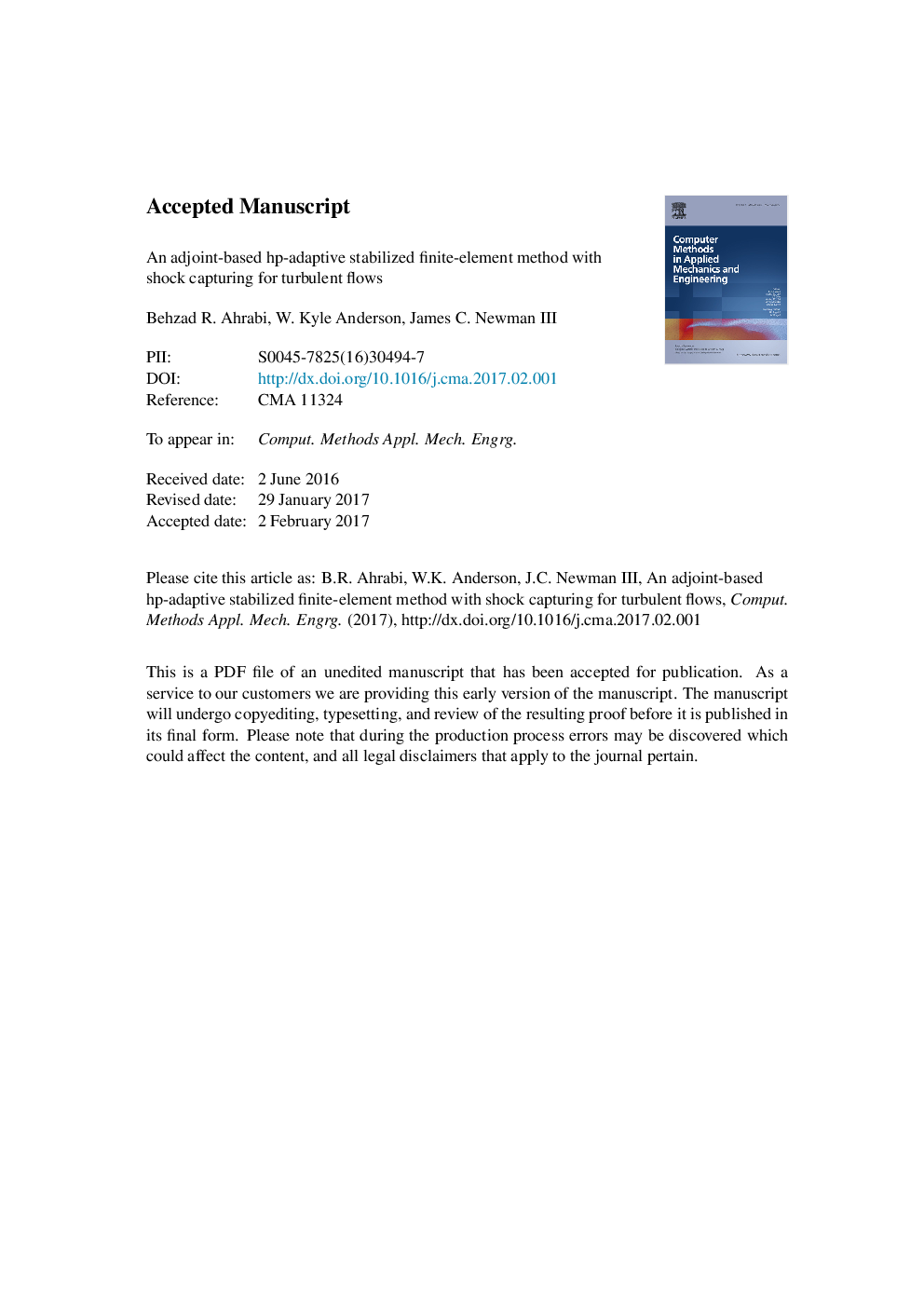| Article ID | Journal | Published Year | Pages | File Type |
|---|---|---|---|---|
| 4963992 | Computer Methods in Applied Mechanics and Engineering | 2017 | 43 Pages |
Abstract
In this study, an adjoint-based hp-adaptation algorithm has been developed within a Petrov-Galerkin finite-element method. The developed mesh adaptation algorithm is able to perform non-conformal mesh adaptations. To account for hanging nodes in a consistent manner, the constrained approximation method has been utilized. Hierarchical basis functions have been employed to facilitate the implementation of the constrained approximation. The methodology has been demonstrated on numerous cases using the Euler and Reynolds Average Navier-Stokes (RANS) equations, equipped with negative variant of Spalart-Allmaras (SA) turbulence model. Also, a PDE-based artificial viscosity has been added to the governing equations, to stabilize the solution in the vicinity of shock waves. For accurate representation of the geometric surfaces, high-order curved boundary meshes have been generated and the interior meshes have been deformed through the solution of a modified linear elasticity equation. Fully implicit linearization has been used to advance the solution toward a steady-state. Dirichlet boundary conditions have been imposed weakly and the functional outputs have been modified according to the weak boundary conditions in order to provide a smooth adjoint solution near the boundaries. To accelerate the error reduction in presence of singularity points, an enhanced h-refinement, based on solution's smoothness, has been used. Numerical results illustrate consistent accuracy improvement of the functional outputs for both h- and hp-adaptation, and also capability enhancement in capturing complex viscous effects such as shock-wave/turbulent boundary layer interaction.
Related Topics
Physical Sciences and Engineering
Computer Science
Computer Science Applications
Authors
Behzad R. Ahrabi, W. Kyle Anderson, James C. III,
